Genre: FMV Developer: Digital Pictures Publisher: Sega of America Players: 1 Released: 1995
Prize Fighter is an FMV boxing game developed and released by Sega CD full motion video stalwarts Digital Pictures. Prior to this review, I had never played an FMV game in my life. This was intentional because after seeing and hearing all the horror stories about the genre for years, I had no interest in playing the unplayable. But a funny thing happened on the way to the Land of Grain: I kind of liked it.
Prize Fighter is not a good game. The video is black and white, takes up only a quarter of the screen, and the gameplay is atrocious. But what the game has going for it is something that B-movies have done since the first talkie; it manipulates the player/viewer into reluctantly having an affinity for the characters. Certain aspects of the game are enjoyable in spite of itself and I think that was the intent by the creators because they knew they were dealing with infant technology. They had little to work with as far as mechanics, so had to pump up the theme and characterization.
The first thing that needs to be done in order to start out on the right foot is to read the manual. I think many gamers (myself included) just like to jump right into these games and then get frustrated when we don’t understand what’s going on. Firstly, the game is compatible with the six-button controller and I suggest you use it. Otherwise, your punches are reliant on too many combinations of buttons and directional input. Secondly, in the options menu, set the option to training mode. This gives you punch suggestions from the computer in the first round of each fight only, and it makes the gameplay much more palatable for reasons that will be explained later. Lastly, the game bases your boxing ability on a point system divided between left-hand power, stamina, and right-hand power. Just like real boxing, one hand needs to be the power hand and one hand needs to be the jab hand. Divide your points between the hands and stamina at a 2:1:1 ratio so that you can actually knock someone down. After you start defeating boxers, you will earn more power points that will be deposited in this ratio.
The gameplay consists of full motion video of four opponents played by actors, split across two CD-ROMs. You are in a first-person view, looking at the bout through the eyes of your character, The Kid. Your punches are delivered by superimposed sprite fists which give you a variety of attack, just like a real boxing match. Jabs, hooks, body blows, and uppercuts are used to cut down your opponent but are only effective when the action buttons are pressed at the correct time. The first round gives you arrows as directions on what kind of punch to throw based on the movement of your opponent. When a hit connects, the video will cut to a close-up of your opponent’s face getting pummeled for a split second. Both boxers’ damage is displayed by a small sprite face located under the video screen, which gets bloodier and more disfigured as more punches are sustained. This is not a button-mashing exercise; each hit will connect by studying your enemy’s style and wasted punches will diminish your stamina and result in The Kid getting destroyed.
The main attraction of Prize Fighter is the video production, which is top notch, considering the time this game was made. Professional actors are utilized including Nina Blackwood (MTV VJ fame), Dick Miller (Gremlins, The Burb’s), and veteran Hollywood stuntmen Ben Bray, Manny Perry, and Jimmy Nickerson. The writing and the acting are supposed to be tongue-in-cheek, which may be lost on some people playing the game. I laughed during this game… repeatedly. I laughed between rounds when an actor in the crowd would tell me how much of a loser I was. I laughed when my first opponent “Honeyboy” Hernandez called me a punk, and I especially laughed at every scene with the referee (played by Gene Lebell), who made smart-ass comments to just about every person in the game. Everything is in grayscale, which is much easier on the eyes and on the Sega CD hardware. The cut scenes are full screen letterboxed but the in-game fight screen is ¼ quarter size.
I wish I had something positive to say about the audio. I was not happy with the music or the sound in this game; it seemed to be a little distorted and tinny. That’s not at all what you’d expect from a CD-ROM game.
If you approach Prize Fighter with an open mind, a sense of humor, and the aforementioned directions on options and control, you will like it. It’s worth picking up cheap, and it has some good replay value as long as the sessions are far apart. It took me five bouts of losing to “Honeyboy” Hernandez and being subjected to his taunts and the audience between rounds to finally knock him to the canvas. And when I did that, I yelled out loud with a satisfaction and a triumphant string of profanities that you would not believe.
SCORE: 5 out of 10

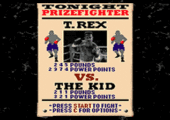
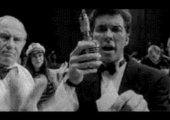
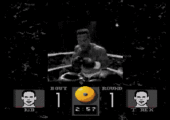
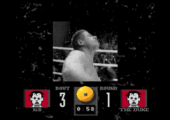
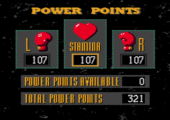
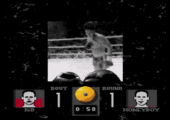
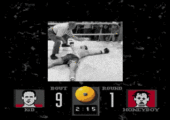
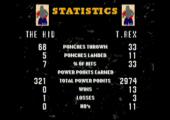
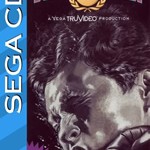
This is one of the first games i got when i got my Sega CD system back in the 1990’s and i still play it occasionally up to this day. It’s lots of fun once you get the hang of it and it also has a training mode that shows arrows on the screen to help you along the way. I have completed this game many times and think it’s a great game.
As far as i know it was never released for any other system except Sega CD.
I would rate this game a 7 out of 10.
i’d give this one an 8/10. with the right strategy this game is actually really fun. First, go to the options and put training mode on. This will show you where and when to punch your opponent, and you can play through the entire game this way. The challenge of the gameplay is still there as you can still be owned by your opponent. Secondly, once you start racking up power points, add most of your power to your left hand. You should keep your health power up as well. Doing this will get you through the game a bit faster and avoid fighting the same fighter too many times.